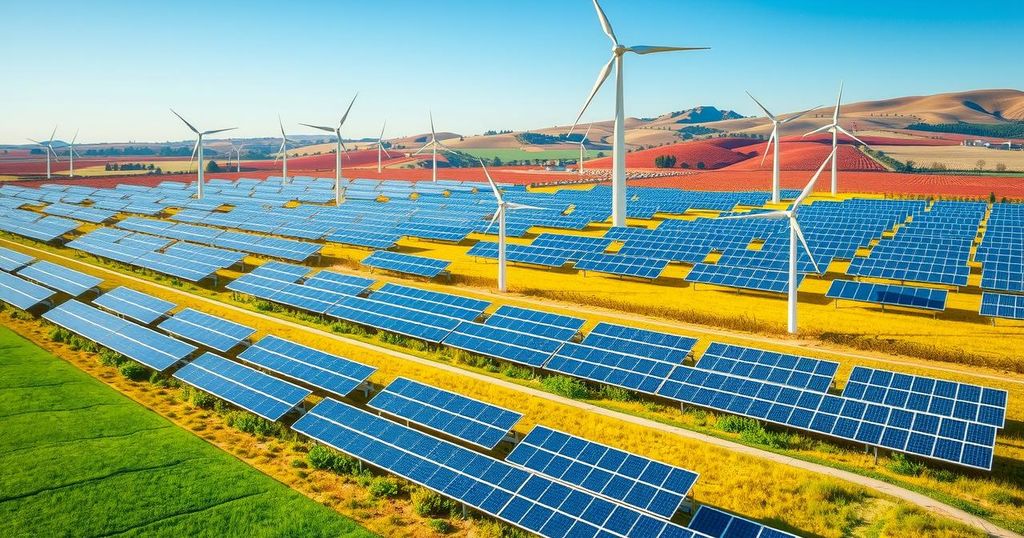Politics
ANTONIO GUTERRES, ASIA, CHINA, COTTBUS, COTTBUSER OSTSEE, ENERGY, ENVIRONMENTAL POLICY, EUROPE, FRANCE, GERMANY, GLOBAL WARMING, GREENHOUSE GAS EMISSIONS, INTERNATIONAL RENEWABLE ENERGY AGENCY, IRENA, MATTHIAS SCHRADER, MEXICO, NG HAN GUAN, NORTH AMERICA, OSTSEE, RENEWABLE ENERGY, SHANDONG, SIMON STIELL, UNITED KINGDOM, UNITED NATIONS, UNITED STATES, WASHINGTON, WEIFANG
Nia Simpson
Record Surge in Renewable Energy Installations Driven by China’s Solar Boom
Renewable energy installations reached a record high in 2024, predominantly fueled by solar and wind energy, with China contributing 64% of new capacity. However, the world is projected to fall short of the target to triple renewable energy by 2030. The renewable energy market has grown to $2 trillion, highlighting the need for accelerated policies to enhance growth and meet climate goals.
Global renewable energy installations surged to unprecedented levels, with over 92.5% of new electricity capacity derived from solar, wind, and other clean sources, as reported by the International Renewable Energy Agency (IRENA). In 2024, China accounted for nearly 64% of this capacity, demonstrating its dominance in the renewable market. The world added 585 billion watts of renewable electrical energy, marking a significant 15.1% increase compared to 2023, and 46% of global electricity is now sourced from renewables.
Despite this progress, the world remains off track to meet the international goal of tripling renewable energy by 2030, with IRENA estimating a potential shortfall of 28%. This ambitious target was established in 2023 as part of global efforts to combat climate change and transition from fossil fuels. United Nations Secretary-General Antonio Guterres emphasized the importance of accelerating the clean energy transition for job creation, cost reduction, and air quality improvement.
In 2024, China contributed almost 374 billion watts of renewable power, mainly from solar installations, exceeding the efforts of the United States and Europe combined. Currently, China boasts nearly 887 billion watts of solar capacity, vastly outpacing its counterparts. Such figures prompted UN climate chief Simon Stiell to urge industrialized nations, particularly in Europe, to enhance their climate leadership and capitalize on the shift to clean energy.
Stiell highlighted the emerging economic opportunities within the clean energy sector, suggesting that the transition could serve as a significant growth driver for Europe amidst challenging economic conditions. He cited IRENA’s findings that the global renewable energy market reached an impressive $2 trillion last year, emphasizing the unstoppable momentum of renewable growth. Furthermore, Neil Grant from Climate Analytics noted that the growth of renewables could accelerate even further with robust climate policies implemented worldwide.
In summary, the renewable energy sector is experiencing remarkable growth, driven largely by China’s advancements in solar power. Despite achieving notable installation figures, the global community faces challenges in meeting ambitious climate goals set for 2030. Stakeholders are encouraged to adopt comprehensive policies to further expedite the transition to renewable energy, which presents not only environmental benefits but also significant economic advantages.
Original Source: apnews.com








Post Comment